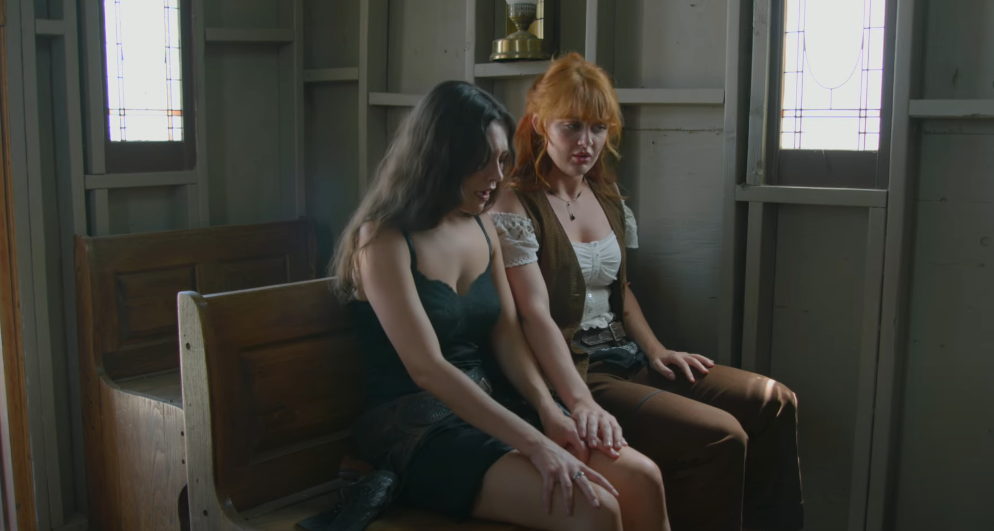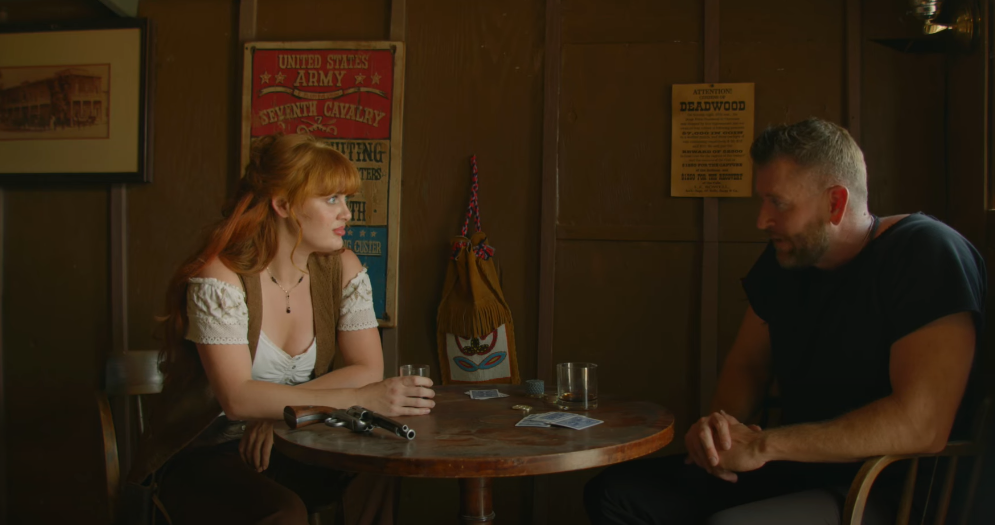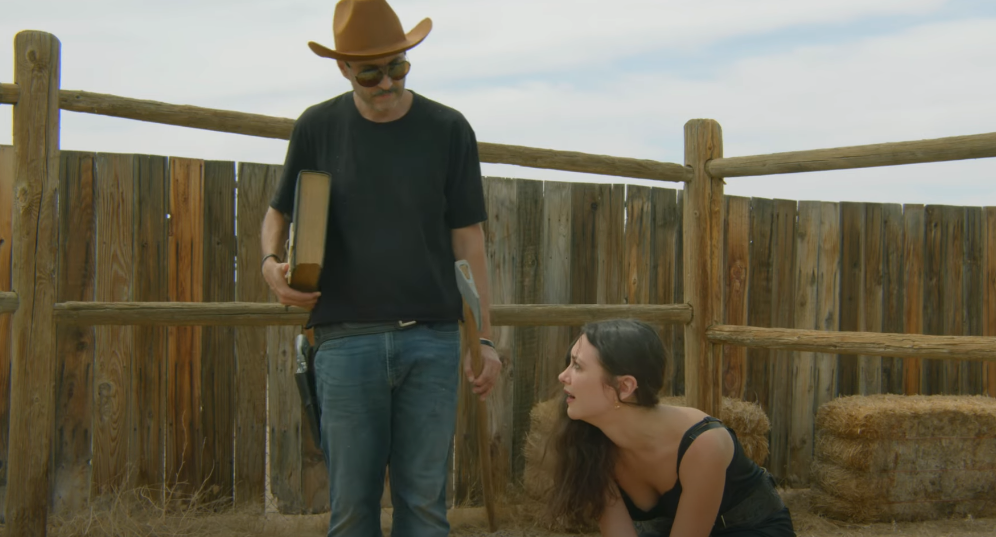Jamie Grefe’s Butchered by Sundown is a daring, if uneven, experiment in low-budget western horror. At its core, the film follows a widow, played by Hannah Hueston, who is relentlessly pursued by the man who murdered her husband. Alone in a ghost town of strangers, she must confront not only this physical threat but also the lingering demons of her past. On paper, the premise is simple, but Grefe layers it with surreal, almost metaphysical touches that make the story linger in the mind long after the credits roll.
The film’s greatest strength lies in its atmosphere. The barren desert, the minimal wooden sets, and the occasional gust of real wind captured by the microphones create a sense of isolation that is rare in contemporary genre cinema. Even the sound design—guns firing without muzzle flashes—adds a gritty realism that contrasts with the film’s more fantastical elements. These choices remind viewers that, despite its low budget, there’s a real crew and a tangible environment grounding the story.
Hueston and Jillian Gabby, playing characters on opposite sides of the law, share a compelling adversarial chemistry. Their relationship develops in a way that echoes classic western partnerships, with tension gradually giving way to collaboration. By the climactic scenes, their alliance against Grefe’s imposing “Demon Stalker” character pays off, offering both satisfaction and a hint that more adventures could follow. This dynamic injects warmth and emotional investment into an otherwise stark and harrowing tale.
Yet, the film is not without its flaws. The acting, particularly from the supporting cast, ranges from awkward to unintentionally comedic. Grefe’s own portrayal of the antagonist—complete with a cowboy hat, aviator sunglasses, and black sneakers—sometimes breaks the period immersion. Set construction is visibly rough, and modern elements like a solar security light briefly appear in scenes meant to evoke a timeless ghost town. The plot itself is often meandering, leaving moments that feel underdeveloped or disjointed.
Despite these issues, Butchered by Sundown has a strange, compelling charm. It embraces its imperfections, leaning into a raw, experimental aesthetic that feels both immediate and daring. Fans of offbeat westerns, surreal horror, or Grefe’s previous work will find much to admire here. For those willing to approach it with patience—and perhaps a strong drink—it offers a unique cinematic experience, one that lingers as much for its audacious ambition as for its narrative.
In short, Butchered by Sundown is rough around the edges, but its boldness, atmospheric visuals, and the evolving bond between its central characters make it a memorable and surprisingly affecting entry in the western-horror canon.
Jessie Hobson




